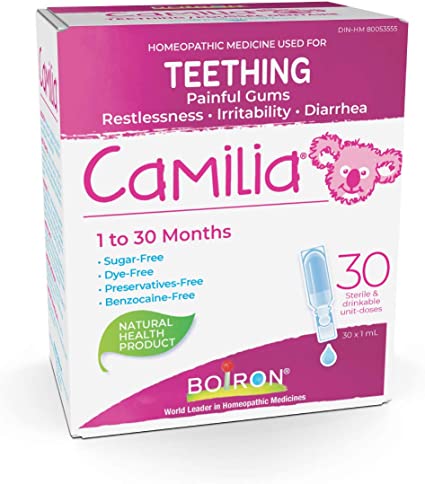Pharma & Healthcare
Customer Centricity: Your Secret Weapon in Pharma & Healthcare
So, you’re probably bored of hearing the term ‘customer centricity’, but trust us when we say that n...

Feb 6, 2023
4 min read
Succeeding at digital transformation requires a dedication to change, particularly when it comes to the digital technologies shaping the pharma industry. This is challenging when you consider the complexities around healthcare regulations, patient privacy, and the varying levels of digital maturity in organizations.
Despite these challenges, there are many impressive examples that illustrate how some pharma industry players are embracing digital technology. In a recent post, we covered some of the top pharma industry trends for 2023. Now, we want to provide five specific ways that companies like Sanofi, Amgen, and Novartis are using disruptive innovation to reshape business as usual.
Sanofi aims to be a front-runner in mRNA vaccine creation, committing $476 million a year to develop a mRNA Center of Excellence. Their acquisition of Translate Bio in 2021 is part of their commitment to furthering vaccine research and production. Translate Bio is a revolutionary mRNA therapeutics company that uses innovative mRNA technology to create clinical-stage treatments for lung, pulmonary, infectious, and other diseases.
Sanofi is also reinventing the way they do R&D with four technology platforms focused on improving drug discovery and development. The platforms, which include Small Molecules, Biologics & Large Molecules, Gene and Cell Therapy, and Delivery Technologies are focused on transforming how drugs are discovered, manufactured, and delivered.
For example, with their Biologics and Large Molecules platform, Sanofi is creating state-of-the art analytical techniques to control all stages of biologics manufacturing, ensuring product consistency and safety. Their Device Development Unit team also works closely with patients to develop new delivery devices for biologics which must be injected due to their molecular size.
Amgen, a global leader in biologics manufacturing, pioneered a novel manufacturing process that uses disposable, single-use equipment to minimize water consumption, reducing the high energy required for machine sterilization. Disposable filters, tank liners, and bioreactors mean it takes less time to prepare traditional stainless-steel equipment for biologics manufacturing.
While this doesn’t specifically fall in the category of digital healthcare trends, it’s a technology innovation that allows Amgen to efficiently increase production that makes their medications more accessible to patients. The single-use equipment is designed for simplicity. It's easy to operate and install which means less human error and a more streamlined production process.
Combining single-use equipment with stainless steel also reduces change-over times, shortening the entire production process and increasing overall agility. This makes Sanofi much better equipped to respond to demand.
Headquartered in Messimy France, Boiron is a global leader in homeopathic medicine. In 2020, they were growing rapidly and needed a way to aggregate their large volume of international orders into one central hub.

Boiron has to manage government regulations across the many countries they operated in, which meant they needed a fast, easy way to archive and retrieve pharmaceutical documents.
Over the course of 18 months, Boiron implemented a digitization initiative with TIBCO, an integration platform that enables companies to integrate multiple systems and applications. They connected multiple healthcare technology, data, sales, and operational platforms including (but not limited to) Cegedim, OpenText, Sage X3, Salesforce, and Microsoft Azure.
The newly updated system in place allows Boiron’s team to easily develop new workflows and fortify their entire digital infrastructure from outages and breaches. They can also monitor their business processes and better manage their rapid growth. The new tech sped up their archiving process to 3 days (down from 20), while allowing them to upload more than twice the number of documents per minute (they went from 500 to 1250).
Novartis is leveraging data in ground-breaking ways. For example, they use wearable digital sensors to capture continuous data on quality of sleep, physical activity, and fatigue which can be used as "endpoints" in trials. These digital endpoints help improve clinical trial relevance, objectivity, and patient outcomes.
Novartis used this wearable sensor and digital endpoint approach to glean new insights from 16 trials in 2021, including their chimeric antigen receptor T-cell (CAR-T) programs which use wearable digital sensors to detect early serious side effects for outpatients in CAR-T trials.
Novartis is literally winning awards for data innovation. They successfully combined formerly siloed data and legacy systems via an enterprise-wide data and analytics platform. The solution combines over 100 solutions that include the entire Novartis ecosystem. They now have access to real-time data sharing, analytics, and decision support capabilities.
Danish company LEO Pharma recently partnered with Repurpose.AI (now Model Medicines) to use their AI Discovery Platform to aid in drug discovery. LEO Pharma is a world leader in dermatology therapeutics. They wanted to leverage the power of AI to speed up the process of repurposing existing drugs for new indications.
Per the official announcement on Model Medicines' website:
"The research collaboration will leverage Model Medicines ActivPred AI Drug Discovery Platform, an unbiased drug, target and disease agnostic digital chemistry engine, to discover drug candidates for inflammatory skin diseases. "
Model Medicines created a version of their platform that's inflammation and dermatology specific. It uses machine learning and artificial intelligence to discover drugs with the potential to be repurposed as therapeutics that treat inflammatory or dermatology conditions.
Drugs identified this way can enter clinical trials in just a few months. That's because Model Medicines has a drug library consisting of thousands of drug compounds which are already approved for commercial use by various government agencies.
The above examples illustrate the vast potential of disruptive innovation in pharma. Innovations and digital trends in the pharma industry include digital tools, platforms, and technologies that help organizations better manage data, remove information silos and remain agile.
With these exciting new technologies, pharma companies can increase efficiency and reduce costs by streamlining processes like clinical trials, product development, data analysis, and drug discovery. And when your new product is ready for launch, digital tools can help you plan, develop, and refine your product launch campaigns.
Our digital learning course, Product Launch Campaigns for Pharma & Healthcare, contains three lessons focused on helping upskill and train your team on how to leverage digital tools to launch products in the pharma and healthcare industry.
So, you’re probably bored of hearing the term ‘customer centricity’, but trust us when we say that n...
In 2020, investment in healthcare technology grew by 47%, reaching $51 billion. The rapid pivot to t...
Having had the privilege of contributing to many country, regional and global launches, as well as w...
Get in touch and we can start helping with your digital learning journey.